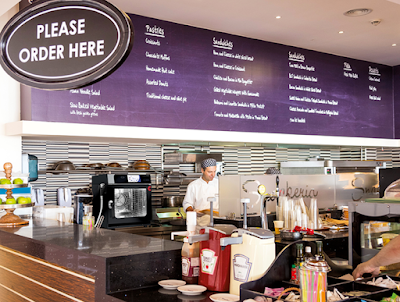Adapting to Change with Ventless Kitchen Equipment
The amount of change our industry has undergone the past few years has been head-spinning. With everything from the meteoric rise of delivery, display cooking, kitchen transparency, outdoor dining, increased physical space between people, and so on…the list keeps going and growing.
Adaptation is key to success and sometimes survival, but re-designing the entire kitchen, knocking down walls, and re-routing plumbing and ventilation every time the wind blows a different direction isn’t sustainable for any operation.
This is where ventless kitchen equipment rides in to be the hero. The walls can stay where they are; only the limitations get knocked down.
Ventless kitchen equipment can quickly adapt your kitchen operation and add value in the following ways and then some.
- Faster, simpler installation can be done at a lower cost and with less disruption.
- Add cooking capacity even if all existing hood space is in use.
- Support front of house applications for service speed, transparency, and labor and space utilization.
- Allow for physical distancing between employees when needed.
- Move cookline to nontraditional locations or underutilized space to generate additional revenue.
- Implement new cooking technology in older or multi-floor structures without costly retrofitting.
- Replace multiple pieces of equipment with one user-friendly, multi-function model.
- Add food prep capability to an existing bar or lounge.
There are too many to list in this article, but here are a
few of some of the leading ventless kitchen equipment options now on the market.
Cooking and Baking
Merrychef High Speed Ovens
Convotherm
mini easyTouch Combi Ovens
Lincoln
Stackable Countertop Impinger Oven CTI 2500 Series
Hatco Rapide Cuisine and Boxer Countertop Induction Cooktops
Retherm and Holding
FWE Retherm Ovens
Mercomax
Visual Holding Cabinet
Warewashing
Champion DH-6000T Hood-type Dishwashing Machine
How does ventless technology work?
Many ventless oven models such as Welbilt's Merrychef, Convotherm, and Lincoln CTI have a built in catalytic converter, which ensures a smokeless cooking process. The catalytic converter reduces most of the organic gases and substances of cooking fumes by oxidizing them into carbon dioxide and water vapor. To learn more about Welbilt ventless equipment, click here.
This process not only enables the machine to be ventless but is also an energy saving feature. And staff will be grateful too, since the air placed back into the dish room by the heat pump is cooled to under 70° and humidity is reduced by over 80%.
It’s important to note that local codes prevail, so please be sure to double check with your local code authority before you purchase ventless equipment. Also, plan ahead as much as you can since lead times for most equipment items (in foodservice and elsewhere) continue to be longer than usual.
If ventless is an option you’re considering, we’re here to help you identify equipment models that are the best fit for your menu and your business. Contact us.







Comments
Post a Comment